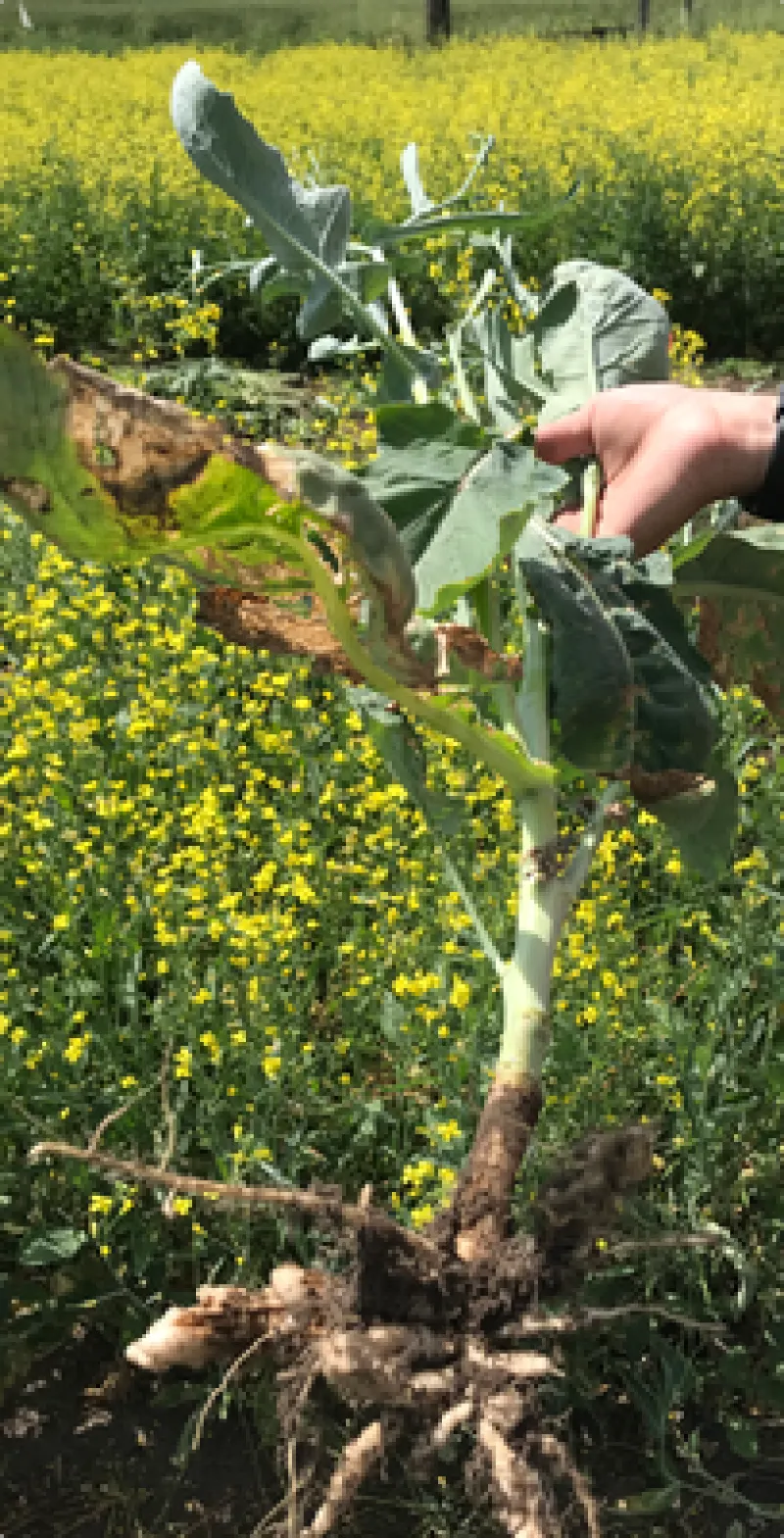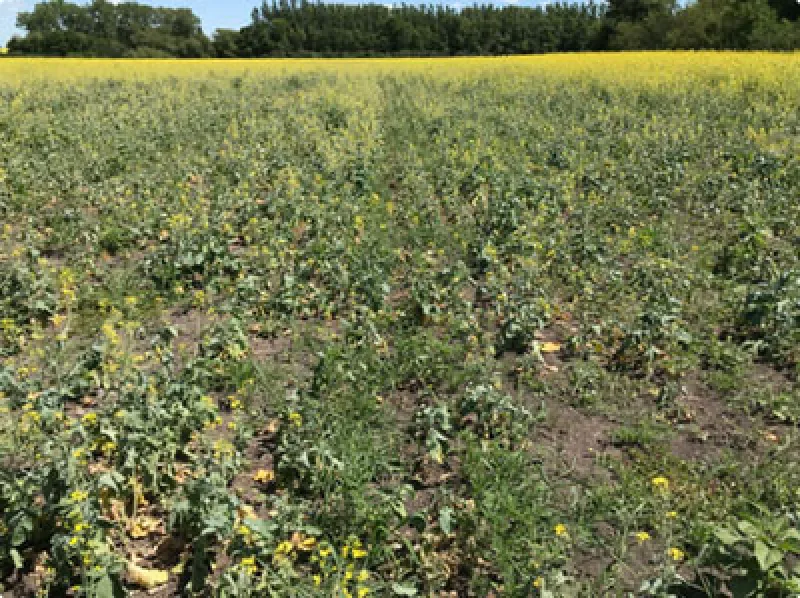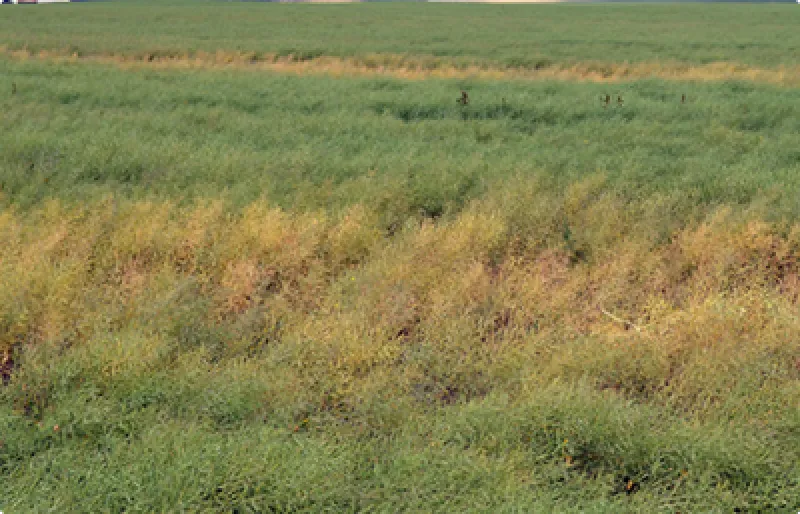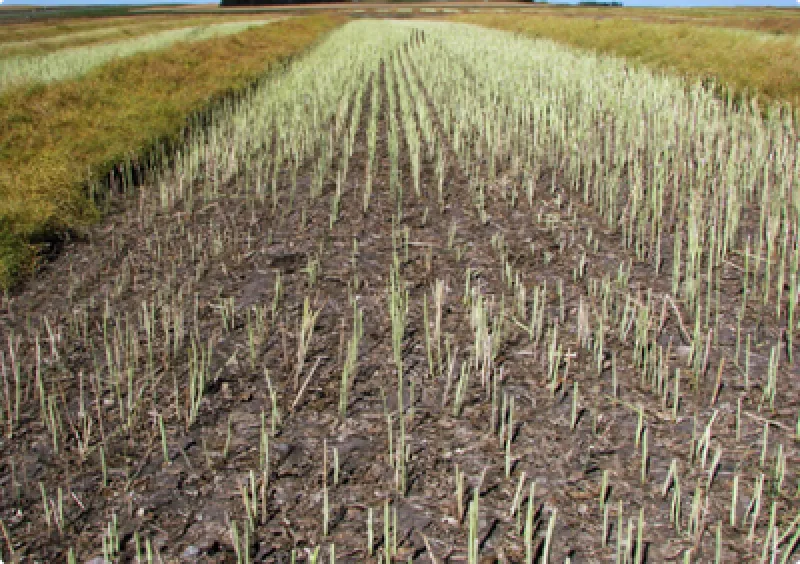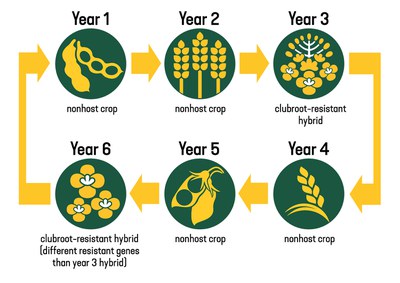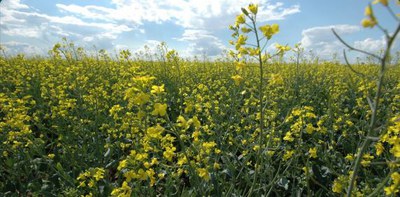Symptoms of clubroot can include wilting, stunting, reduced seed production, a thin stand and premature plant death (Figures 1-3). However, above-ground symptoms do not always occur and are not diagnostic of the disease. Additionally, above-ground symptoms of clubroot resemble many other ailments, including moisture stress (flooding or drought) and infection with other diseases (blackleg, sclerotinia stem rot, etc.).
Figure 1. Area of field with clubroot resulting in a stunting, wilting and thin stand. (Venkata Chapara, NDSU)
Areas of a field with clubroot resulting in premature death.
Thin stand due to clubroot after harvest.
P. brassicae colonizes root systems, compromising the moisture and nutrient uptake of the plant. When scouting, whole root masses should be dug up and carefully examined, rather than pulled at the base of the stem. Infected roots will appear deformed with swollen areas of tissue called galls. Galls will be small as they begin to develop but may be up to 1 inch in diameter by the time of maturity. Infected roots may have just one or a few galls in discrete areas of the root tissue (resembling clubs) or numerous galls that impact nearly the entire root system (Figures 4 and 5). Galls commonly lose integrity as the season progresses, and by plant maturity are brittle and dusty when broken.
Localized galling of canola roots.
Severegalling of canola roots.
Several weeks after swathing, galls may have decayed and no longer be visible. The remaining roots appear dark brown rather than have a normal and healthy whitish appearance. Severely infected plants/stems will have very little root tissue remaining and can be hand-pulled from the soil easily.
